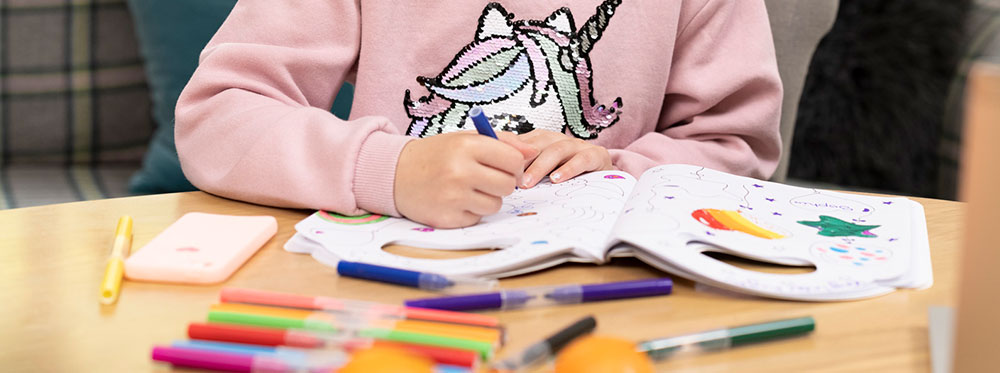Even if you’ve never seen the inner workings of an online school, it’s not too difficult to picture how a typical class would work. Online teachers can explain history or math topics, for example, in the same way they would at a traditional school. If you’ve ever used a language learning app, you can probably imagine how online technologies can come in handy in education too.
However, many parents are left stumped when it comes to more hands-on subjects at online school — for example, how do children learn the arts?
In reality, while it may be hard to imagine a virtual painting class or an online drama lesson at first, students really can get a stellar creative education from the comfort of their own computer. The top online schools teach many artistic subjects, from fine art to drama to music. Here’s how they work in a virtual learning environment.
Combining Virtual with Physical
Picture a traditional fine art class at a mainstream school: students working independently at their desks or easels as a teacher demonstrates technique and offers individual guidance. You may be surprised to learn that a virtual art class works in a very similar way. The only difference is that the top online schools combine hands-on creativity with virtual teaching methods.
In interactive classes, online school art teachers can explain the ins and outs of creating. Just as a traditional teacher would stand at the front of a classroom to teach form, technique, and materials, an online school teacher explains these concepts through a live video link.
Students then use this information and guidance to create art at workspaces in their own homes. Online schools may exist in the digital sphere, but not all learning takes place virtually. Online students use the same materials mainstream school students do, painting on canvas and sculpting with their hands, taking photos and sketching figures.
Teachers demonstrate using desk cameras which share their work clearly on screen. Then, as online learners work on their art pieces, teachers provide critique and feedback. Students can stream their process through a webcam, allowing their teachers to see their work just as they would if they shared the same physical classroom. All in all, online art lessons involve the same level of creativity and evaluation you’d expect in any traditional class.
Working Together Online
Of course, not all art is created independently. In drama classes, for example, performing with other students is a crucial part of learning how to connect with fellow actors, improvise dialogue, and more.
That said, online students don’t need to be in the same physical space to work together. Through their cameras and microphones, they can speak with their classmates, demonstrate gestures and expressions, and collaborate on planning and scriptwriting. Learners may begin an online drama lesson with a whole-class warm-up, then separate into breakout rooms to practice skits in small groups. Classes can even put on whole plays online, recording their lines and editing them together as a full performance for fellow students and parents.
Taking Advantage of Flexibility
The flexibility of online schooling is another advantage in many creative subjects. While studying photography, for example, learners aren’t limited to taking photos within the vicinity of their school building or around the same town.
Online school communities often bring together young people from all over the globe with endlessly varied lifestyles, so every student can showcase environments, people, and objects that are unique to them. A teen in an Atlantic coastal city, for example, may snap photos of dolphins, capturing the motion of water in an incredible way. A child who balances online school with skiing, meanwhile, will learn how to adjust their camera settings to photograph pure white snow perfectly.
As students share all this distinctive work with each other, they’ll get unmatched exposure to different styles of photography, camera techniques, and visual perspectives. In turn, this brings learners a more well-rounded understanding of photography that they may not get at a mainstream school.
Showcasing Student Work
Finally, the best online schools always make sure to showcase and celebrate the amazing work students produce in their creative classes. Alongside putting on productions and sharing images in class, students will also get to see their work on display. Instead of hanging paintings on school walls, however, online schools share them in videos and blog posts.
On top of inspiring fellow students and making parents proud, these virtual showcases also get students’ art in front of people outside their school community. Who knows — the next person to see a student’s drawing online may be a publisher with illustration opportunities to offer or a gallery owner in search of pieces for an exhibition.
